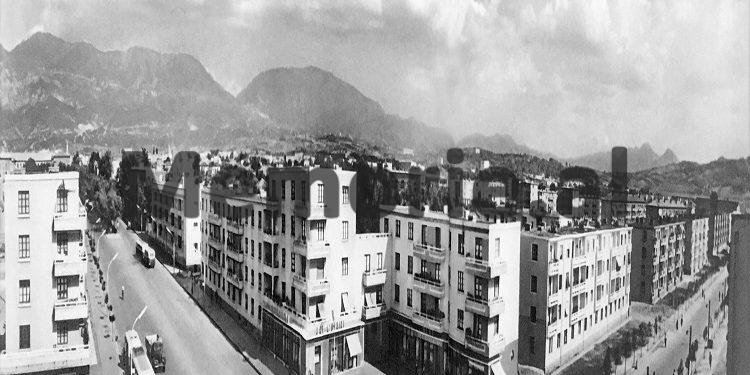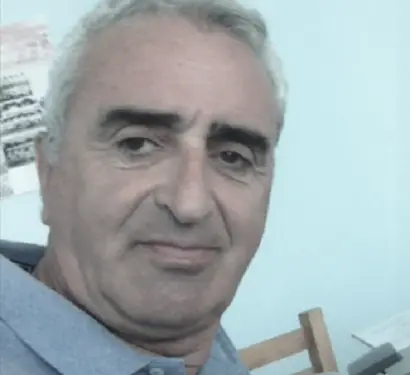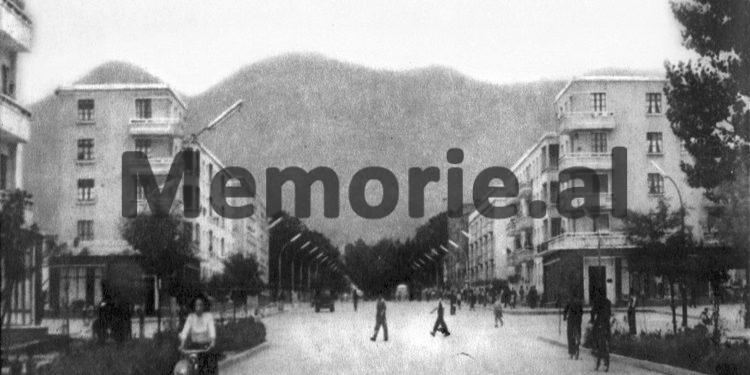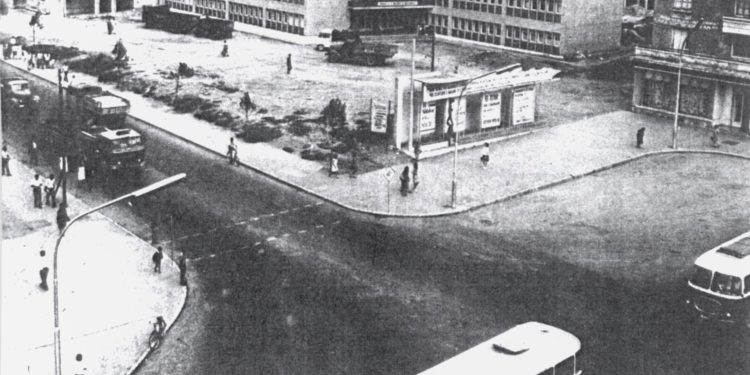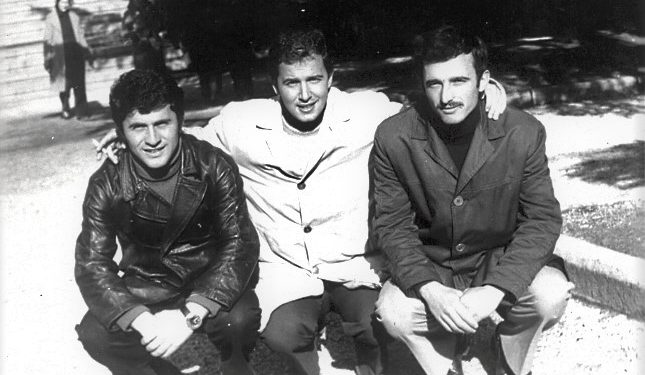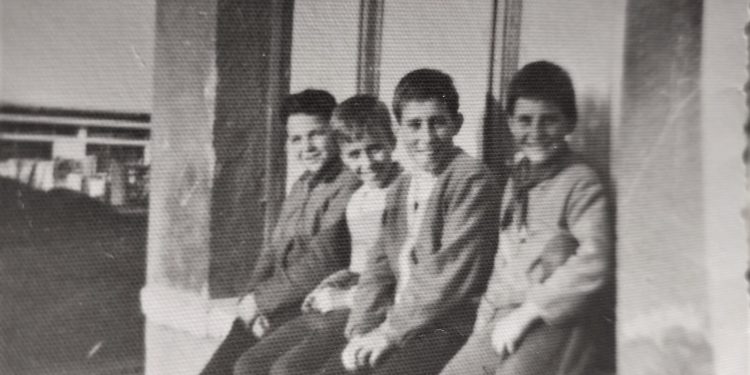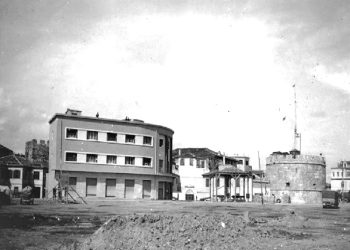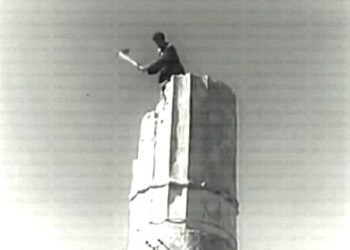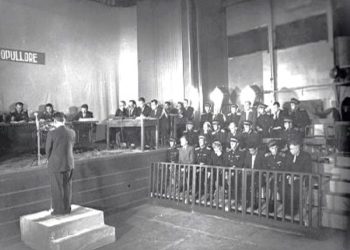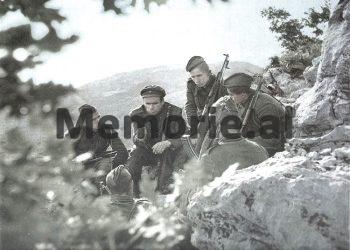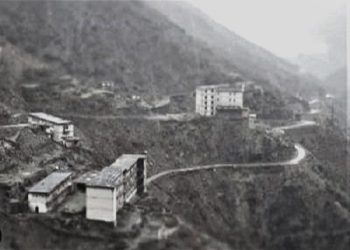From Uvil Zajmi
Memorie.al/ It seems as if all roads pass through “21-shi”. Not only for the people of Tiron, but also for all the newcomers, mainly from the South, is “21-shi” has another meeting pointed, besides the Skanderbeg monument. Everyone takes it for granted, but apart from the residents or former residents of the area, there are few who know its history, how it was built, when, why it got the name “21 December”, what were the first buildings…! To quench the curiosity of those who do not know, but also for the nostalgic, we are going back in time, not only to the history of this area built by former political prisoners, but also to remember its former residents, figures known or not, the enterprises that filled the area, shops and barbershops, sellers, police, etc.. It is the 60s and Tirana is involved in a construction phase, as the need for housing is great.
In its regulatory plan, it was designed to start construction in a free part, in the west, about 300 meters away from the center of the capital, along the “Peza Conference” road, the only one that leads to the Combine, to the Sharra Cemetery, Ura e Beshiri, Ndroq, Peze, then to Plepat e Durrës. Before the construction, only the Rrem Vrap pub, the former lumberyard, the Mënikve Mill, the Scales and on the right, the Aviation Field lived in that area.
Named in honor of Stalin
The “21 December” block was a town within a town, a small metropolis, a multifunctional center where all layers of the population lived together. With a giant cross, symbol of the area, it was called “December 21”, a name chosen during the period of communist Albania. Those were the years of great Albanian-Soviet love. December 21 is the birthday of the Soviet dictator, Joseph Visaranovic Stalin. In the span of two years, the works were completed, after working without interruption and as a labor force, political prisoners were used, but also the construction masters from Golloborda, organized in the Bachelor’s House, the first on the left.
At one time the three established buildings were erected; two from the right and one from the left, along the road, which opened in width, even the last two, designed in the shape of L and Z. Then the two tower buildings, as soon as you cross the intersection, to continue with the symmetrical buildings from the two sides of the street towards the west, but also from the south, with the same structure of four and five floors, with two and three rooms and a kitchen. The palaces were without balconies on the first floor and with cellars, but only to keep wood and coal. The lighting of the street was done by evenly spaced poles, with long neon lamps.
Then the shops: From the Barber, the Permanent, the Post Office, the Savings Bank, the Grocery Store, the Patisserie, Self-Service, Mapo, Ambulance, Dental Clinic, bus stations and, with them, the most famous and popular people in the world of art, culture, professors , archaeologists, writers, sportsmen, of various professions who lived there. Among them the great soprano Marie Kraja, the sculptor Janaq Paço, etc. But there were also many foreigners, Hungarians, Montenegrins, etc.
Famous enterprises of the “21st”
The establishment “Mihal Duri” was the first when I came to the 21st. behind the building of Ambulance No. 9, was the Institute of Geology, with its unforgettable engineers, from the director S. Guranjaku to R. Avxhiu. That area became famous because there was also the “21 Djetori” Construction Company, the largest not only in Tirana, located on the left, behind the two buildings. Worked in several construction sites and in shifts.
Nexho Konomi remains its legendary director. At the beginning of the ring on the right, there was the Book-Film, the Publishing House, the Printing House “8 November”, the “Kotbus”, the Institute of Pedagogical Studies, where Pajtim Bejtja, Luan Hajdaraga worked, the Institute of Linguistics with Androkli Kostallar as director. In front of them is the ISPM (Mechanical Design Studies Institute), with director Llazar Xhajanka.
Passing the intersection, the “Enver” Plant, the Military Workshop (where only women worked), the NSHRAK (State Vehicle Repair Company), the Goods Park and the Bus Park, all next to each other, were coming towards the Combine as well as undertaking the realization of Works of Art, where the sculptures were cast in bronze. At the bridge, at the Technological School, under which Lana passed, “21” ended there, with its western border.
The famous corner of “21” and urban buses
The first paved connecting road segment was the one between “21” and “Zogut te Zi”, built in the 1960s-’70s. On the northern side of the square, for many years there was the Emulation Board, where it was written “Up the revolutionary spirit” and where notices, photos of distinguished workers, but also lightning sheets were placed. It was always a victim of theft, as young people who spent their time sitting there stole their bicycles at night.
Integrated into the square, were also the public baths, (near the Police Region today), with Ramiz, Mejiti and Xhemila, who took care of them, where of course every service was free of charge, or with a couple of old leks (20 pennies). In the center of the square, in a white circle, stood the traffic policeman.
Residents of the area remember Nasi and Bido, who stayed there until the traffic lights were installed, in the 80s, by the police specialist, Përparim Elezi. What remains in the memory of the residents is the wooden tribune, behind the post office tower building, where artistic performances for children, such as “Pinoku”, etc., were given. It was secretly known as: “Tribuna e Kodoshi”, a name written in ink by an extravagant young man from the neighborhood and it remained so until it was demolished around the 70s, after the old people started using it to play dominoes.
Bus stations, drivers and billers that have been remembered for a long time!
“At 21-shiiiii, who’s going down with me…! We are on the 21st, come closer to the door”, shouted Noci, the legendary busman, when the bus stopped at the station. “21-shi”, was the second station after the Establishment, when going to Kombinat (“Stalin” Textiles), and in front of it, in the opposite direction, the one to the Bank. As during the period when the buses were only Bank-Kombinat, but also with the merger of the Kombinat-Kinostudio line, the movement from “21-shi” was intense, with pupils and students rushing to school and employees, a large part of the residents of the area who worked mainly in the Food Factory “Ali Kelmendi”, the Wood Factory “Misto Mame”, the Textile Factory “Stalin”, with a very large flow, mainly in the morning hours.
Bus drivers, Sejfullai of “Vibert”, “Skoda” with trailers, or Hungarian “Ikarus”, were quite popular. With the functioning of the Great Ring, “21-shi”, it became the node that united Tirana: north-southeast-west, with a road circulation from both sides. Two more stations were created: at the “Sabaudin Gabrani” school and the other in front of it. Often times due to the crowd, the buses that were few in number, overcrowded, did not stop at the station, but continued a few tens of meters further and people ran after them, to get on when they stopped.
Unforgotten schools and teachers
Two, were the schools that are connected with the history of “December 21”, the only ones in that area at the time. The eight-year-old “Naim Frashëri”, located about 150 meters to the west, and “Sabaudin Gabrani”, almost at the intersection, from the south, built around 1965. There was a preference in attendance: The northern and western parts, on the right side of the road, flowed towards “Naim”, (where it is still today near the former Sport – Club “Partizani”), while the other wing, to “Sabaudini”.
We remember the teachers, like Aunt Dizi in biology, the heroines of Russian V. Druga, N. Pustina, A. Hadëri, Zh. Afezolli, A. Cetka, M. Hoxha and after him, M. Bejleri, the legendary directors of “Naim Frashëri”. Likewise, Kimete Bozhigradi, the unforgettable director of “Sabaudin Gabrani”, or Dallandyshja, Semihaja, Zana, Nevrezi, Bedihaja, Saveta, Violeta, Irini, Evanthia, S. Poga, H. Qosja i geografi, Ll. Economics and physical culture, etc., were among the legendary teachers of these two schools.
Next to them, even a wall separated them, were the nursery and the garden. While after the Emulation Table, the Secondary School of Culture was built, together with the dormitory, then it was transferred to the Electrical Branch of the Polytechnic. But also the “Vojo Kushi” ILKF (Higher Institute of Physical Culture), the Technological one, part of “21”, has been.
Ambulance, Dental Clinic, multifunctional
It was located on the first floor of the first building on the left, as on the second floor was the Dental Clinic and on the third lived “reactionary” families (those persecuted by the communist regime) as well as bachelors or pensioners. Like Neighborhood Ambulance No. 9, but also the dentist department, was surrounded by a large renown and both together have been very frequented, not only for the residents of the area, but also of Tirana. As an important health point, the pathologist of Bulgarian origin, Dr. Cikuli, the Spanish one, Dr. Josephine, Dr. Butterflies, nurses; Roza, Peri, Ermioni, etc.
Koço Leka, the doctor who used a motorcycle, Dr. Nasi Bozheku, Rik Pavllo, (well-known surgeon), Zenepja, the injection nurse, with the characteristic thick voice, Dr. Abdulla Beci, one of its directors. While in the Dental Clinic, dentists are remembered, from Aneta, (mother of the current Prime Minister Edi Rama), Melita, Shqipja, Marta who graduated in Sofia, Tasha, the laboratory technician who unfortunately is no longer alive, as well as N. Gjebrea, separated from life recently.
Shops together with sellers
There were several important stores, where all the “21-year-olds” did their shopping. Adjacent to the Red Palace (in front of the Museum) was the bakery known as Xhevo, with the aluminum triangles on the pans, the “Fruta-Perime” store with Donika and Mitro Krasensi, along with them, the Bread Shop, with Lena and Bulmeti, with Kat the seller. But the main one was the block of shops below that Z-shaped building.
In a straight line, there were bread, dairy, food and meat (curds and olives were sold from a door behind the palace). The bread sellers, Paqo, Eftalia, Stana, the mother of Bogdan Zogovic, (former doctor in the emergency room of Tirana, currently lives in Podgorica), or Noc Krasniqi of the Grocery and Bardha e Ninja, of bread. Then there was a haberdashery next to the tunnel and next to it, Dzhiku, the polisher who, for ten lek, shined the shoes…! The only one outside this complex was “Fruta-Perime”, with Nderim as a seller.
Opposite, diagonally (today the Bank) was “Fruta-Perime”, where Gezimi served, then the spouses, Fatimja and Fejzon. Nearby was the Savings Bank, where electricity, water and house rent bills were paid. Upstairs, on the first floor of the tower, facing south was the Post Office with Omer Lam, the person in charge, along with his wife, Bibika, Faro Kapoli and Ylvija. In that area, a kerosene shop and a pharmacy were missing. Without going to the “21st” were the Catholic and Orthodox Churches, which served as the only religious cults, until 1967, when religion was banned by law by the communist regime of the time.
“SELF SERVICE”, the first experimental one in Tirana
“Self-service” was the first time that a service system was practiced, as in today’s markets in Albania, “Gastranomi” and “21 Djetori”, (that’s how the centers with groups of stores were known). Exactly, where the dairy, food and meat shops were before, “Self-service” was opened, which had both its name and its operation: Arranged on shelves, the customer took the groceries and put them in a basket, paid at the cash register before exiting and leaving. The beautiful Rita, Flora, Pina, a wonderful woman, and Dallandyshja, were among the first sellers of “Self-service”.
MAPO and authorized hours!
MAPO, was located directly behind the bend where the haberdashery was, with a frontal view from the north, in front of the bus station. A large Mapo, with two entrances, with U-shaped counters, where you can find everything, footage, clothes, shoes, etc. It has been very frequented, as the only popular warehouse in the area, even from the suburbs, due to the bus stop. In a period of time, in that Mapo, authorized wristwatches were also sold.
Vaja, was the tapestry seller, who notified customers when she was supplied with velvet, very popular with young people. When there was confusion in front of the store and the police force came to help to avoid the crowd, the sale was moved to the back of the building, where a small door was opened.
“Permanente”, the “Aesthetic Center” for women
“Permanente”, (or as it was known and written differently at that time, also as: “Ondulacioni”), was located on the other side of the street, on the first floor of the building, at the bus stop going to the Combine. Very well-known and favorite, as the only “Esthetic Center”, in that area, it was always full of women and girls with the well-known “spacesuits” of the profession on their heads, sitting in chairs, waiting to fix their hair.
Friendly and polite, the women remember the Hungarian Klara, the wife of the well-known radiologist Kosta Nano, Yllka Gëzdari, etc. Adjacent to it, there was also a small shop, “Sock Repair”, with the beautiful Nora, the daughter of the doctor from Shijaku.
Barbers with “unique schedule”!
Barbers, another group, another fame and history. The bar had a western view, this too on the first floor of the Palace in the corner with “Permanent”. With a large space, several barbers worked there at the same time and always full of young men, men of all ages. In addition to the usual shaving service, there was also a place where discussion was heated and football matches were heard on the radio.
Standing on its curbs was also a favorite. With the cheerful and hospitable barbers, a special friendship was created: From Luftar Bregu (Tarja), Demi, Marku, Zičja, Titi, Zihniu, Bilali, to Nazmi Dingu, known as a fan who kept the picture of “November 17” on the mirror, champion of the ’70s. No customer left without a tip. Except for Monday, which was a day off for barbers, throughout the week, the bar operated with a “unique schedule”, a form of service, when the shops did not close for lunch. The “Barbers” shop at “21-shi” also served as a meeting point and where citizens left orders, etc.
Catering and Patisserie, together in one corner
Along with a photographer nearby who separated them, but also united them, they were located in the corner of the first floor of the second tower, to the left of the street, Restaurant and Pastry. Restaurant with a view to the east and Mihali, was the bartender of the bar together with Navenka, the wife of Gj. Marashit, the couple of Montenegrin origin. They also had two children, Kastrioti and Slobodanka, students of “Petro Nini”. On the other side, facing north was the Patisserie with a few steps, where they served Dizi and Suatja.
Repair-Services, with different work sectors
Built a little later, they were two very helpful complexes for the residents of the area and its surroundings. In the diagonal direction, the western sector was inserted behind the first tower from the right, where you could find the Carpentry, Electrical Department, Adjustment-lathe, Welding, etc., where such masters worked as: S. Halili, N. Kapoli , D. Hoxha, etc.
The other one, behind the “Z” building, included other categories of work: Lock repair, Umbrella repair, Bicycle repair, Radio TV, etc., where there were professionals, such as: Skenderi, Fatosi (Tosi), known by the pipe he carried all day. “21-shi” also had “State Property”, (the company that administered and maintained the state palaces) next to the nursery school, behind the “Sabaudin Gabrani” school with Lefter, responsible and Xhevat e Nailen, known for unblocking chimneys.
Palaces and residents, from Marije Kraja, to Janaq Paço, and Skënder Anamali
First from the right, immediately after the Museum, was the palace where the families of the Paço brothers lived, Janaqi, the well-known sculptor, the author of the Skanderbeg monument in Krujë, and Androkli Paço, with their two daughters, Fioralba and Inis; the family of the well-known sportsman, Halit Laçej with his daughter, the sculptor Arminda, and his son, Fatmir, the lawyer; former deputy minister Sali Kubati with his Hungarian wife Irena, daughter Suzana, who currently live in Hungary; Marketinin, Maria and Antoneta of the Kola family; Skënder Anamali, the well-known archaeologist originally from Shkodra, with his children, Tritan and Lydra; the French professor P. Kero, or the family of Kol Goxhaxhiu.
The famous artist, soprano Marie Kraja, lived there with her family and daughter, Ines. In that building, the Shkurti family lived, that of Kapoli, with the brothers Nazmi, Xat and Ner, that of Raqi Noti, (Chief Engineer of the Food Factory “Ali Kelmendi”) and Arben and Nora Noti, his children. For the residents of the buildings in those years, newly organized, it was a curiosity when the planes that landed at the nearby Aviation Field, which is no longer there and belongs only to the memory of the past, flew over their apartments and heads. Memorie.al




